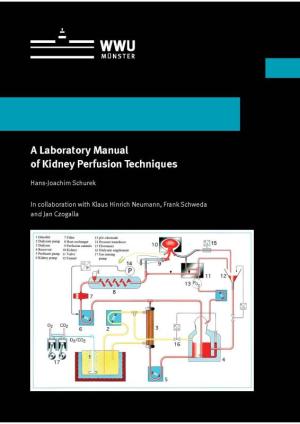A laboratory manual of kidney perfusion techniques
Keywords:
isolated perfused kidney , oxygen, different modalities, concentrating capacitySynopsis
An organ such as the kidney naturally functions best in a healthy organism. Once a kidney has been removed from its normal context, it is crucial to find the optimal compromise between the demands of the problem at issue and the experimental model to be adopted. An isolated kidney is, in effect, a “dying kidney”, although it may continue to function for between 1 and 4 hours, depending on one's definition of normal. The basic reason for the progressive deterioration in function can be found in the stresses set up by the transition from perfusion by whole blood to the use of a more or less artificial perfusing medium. Indeed, blood is a “liquid organ”, a highly complex cocktail that is steadily being reconditioned by the actions of other organs, and this complexity explains why all efforts to maintain kidney function in isolation are ultimately doomed to failure. If we want to approach its fantastic properties, then we should leave an organ as the kidney within the body. As Mephisto remarks in Goethe's drama “Faust”, Studierzimmer II: “Blut ist ein ganz besondrer Saft”: “blood is a quite special juice”.
Permalink
https://nbn-resolving.de/urn:nbn:de:hbz:6-22259740573
ISBN
978-3-8405-0154-8
Hardcover, VIII, 228 pages
References
Deutsche Ausgabe 2015 unter dem Titel "Laborhandbuch Nierenperfusion" erschienen, http://nbn-resolving.de/urn:nbn:de:hbz:6-88219516586, https://doi.org/10.17879/67229530894.
The book was also published on the bookshelf of the National Library Medicine: https://www.ncbi.nlm.nih.gov/books/NBK565898/.

Downloads
Published
Categories
License

This work is licensed under a Creative Commons Attribution-ShareAlike 4.0 International License.

